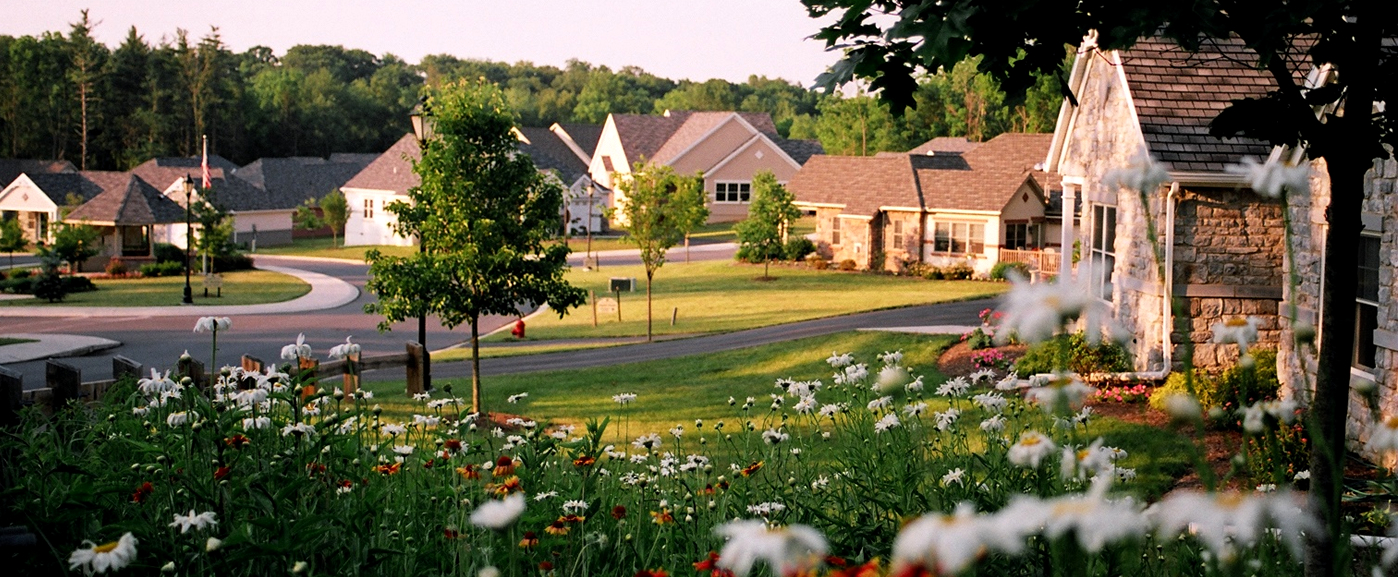
Part of retirement planning is deciding how to make the most of the assets you’ve accumulated to live a long and comfortable retirement. CCRC benefits are an important factor to consider because they can be substantial.
Pennsylvania Retirement Tax Benefits
There are many benefits to retiring in Pennsylvania, including the beauty of the surroundings, four seasons, a temperate climate, an abundance of educational and cultural opportunities, and historic landmarks.
Pennsylvania is also considered one of the best states to retire in from a tax perspective. The state offers many tax advantages that affect retirees, including:
- Social Security tax exemption. In PA, all income from Social Security is tax-exempt. In many other states, all or part of your Social Security checks are taxed, reducing the amount you get to keep and therefore having an impact on your quality of life in retirement.
- No Pension tax. Any retirement income that comes from a pension after you turn 60 is not taxed in Pennsylvania. Even a small pension goes further when you do not have to pay a portion of it in taxes. (And gives you more spending money to take your grandchildren to Hersheypark.)
- No tax on 401(k) or IRA money. Distributions drawn from a 401(k) retirement account or an IRA is generally tax-free for someone who reaches retirement age.
- Lower taxes paid on retail purchases. Retirement income goes even further in Pennsylvania than in many other states. At 6 percent, the state sales tax in PA is one of the lowest in the country. You will save money on the items you purchase daily, as well as clothes and Christmas shopping.
In addition to these benefits, there are other advantages to retiring in Pennsylvania. The cost of living in PA is just 1% higher than the national average, which makes it much more economical than its neighboring states. Residents of New York, New Jersey and Maryland are crossing the border to Pennsylvania to retire.
Despite a low cost of living, Pennsylvania offers a good quality of life for retirees. There is a wide selection of commercial flights in and out of PA airports for vacation travel and visiting family. Goods and services are readily available in most communities around the state, and you are equidistant from New York City and Washington, DC.
Continuing Care Retirement Communities
Choosing a state to retire in may be easy, but you still have to find a place to live. When it comes to choosing retirement housing, healthcare can become a subsequent concern. Moving from where you live now would mean leaving your healthcare providers behind and establishing relationships with new ones. Making a move when you are at retirement age includes different factors.
Once you reach retirement age, major purchase decisions have to become part of a long-term strategy. The money and other assets you have accumulated need to continue to provide for your needs now and in the future. Several options exist for retirement housing and healthcare, but a continuing care retirement community is the only one that combines your housing needs now with your potential medical needs in the future.
But one of the issues when deciding where you want to live in retirement is what you can afford. Your assets must cover the cost of your life now and whatever costs you may encounter in the future. The future can be hard to predict, so you need to get the most out of your retirement nest-egg.
The equity you have built in your house can be one of your biggest assets. By selling your house, you will free up those funds for a different kind of investment. Reinvesting that money in housing in a CCRC that can also offer long-term care you might need could be a smart choice.
Costs for CCRCs vary depending on the property and the type of contract you choose. In general, though, you will pay an entrance fee and a monthly fee to a CCRC. The entrance fee is your initial investment and can be substantial, so think of it as a down payment. Some CCRCs may offer partial refunds of the entrance fee for future health care needs. Monthly fees are based on the type of accommodation, the amount of care required and the services included.
Just like with any large purchase, you have to look at the tax ramifications of moving to a CCRC. It is an investment — not just a property purchase — and it includes access to healthcare when needed.
How to Calculate Tax Benefits for a CCRC
While Pennsylvania offers many tax benefits to retirees, it’s a good idea to do some calculations before entering into a CCRC agreement. When it comes to retirement decisions, there is a lot at stake. Your earning potential is greatly diminished, and most people will live on the same income for the whole term of their retirement. You want to make sure you maximize your funds for the best possible quality of life.
A CCRC can be seen as planning step to prepare for future medical issues and the possible need for modified living accommodations later in life. To anticipate your benefits from a CCRC, you will need to understand the specific terms of the contract.
The CCRC should have a fee schedule for your reference. Based on the type of housing you choose and the level of services, they can give you a range of initial and monthly fees you can expect, just for planning purposes. When you are ready to commit, specifics would be discussed.
Request a copy of the CCRC’s financial disclosure statement and resident agreement. These documents will give you a clearer picture of the CCRCs financial position, financing, fees and services. It is always a good idea to review this information with your financial advisor or attorney.
You will need to find out what portion of the monthly fee, if any, the CCRC allocates to medical care annually. This will be the same percentage of monthly fees for all residents in residential living. You will use the medical care percentage to calculate the portion of your monthly fees that can be tax-deductible.
The percentage of your medical expenses that is tax deductible is set by the federal government. In recent years, that percentage has ranged between 7.5% and 10%. It is a good idea to discuss this and other potential tax deductions with a tax expert.
Pennsylvania, one of the most beautiful states in the country, is home to many continuing care retirement communities, including Cornwall Manor, in beautiful Cornwall, Lebanon County, PA,
If you’d like to speak to a Cornwall Manor representative about the issues associated with moving to our not-for-profit continuing care retirement community, get in touch with us today. We’d love to give you a tour of our beautiful grounds and describe our amenities in greater detail as you make this most important decision.







